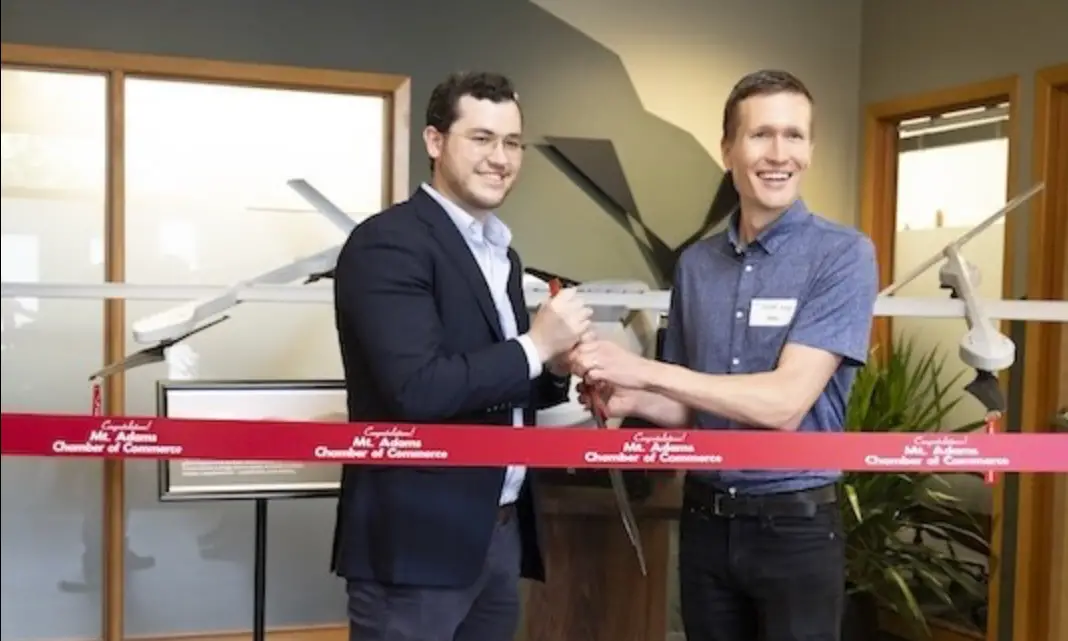
Hydrogen-Powered UAVs Take Flight: Zepher Flight Labs Opens VTOL Drone Hub in Bingen
August 13, 2025Zepher Flight Labs, part of Heven Drones, threw open the doors to its sleek new hydrogen drone facility at 317 W. Steuben Street in downtown Bingen, Washington, on August 8, 2025. Covering 12,000 square feet, it’s packed with cutting-edge prototyping labs, spotless assembly bays and its own hydrogen refueling station. The aim? To build a genuine regional drone hub for hydrogen-powered UAVs, fast-tracking the design, production and rollout of VTOL drones that stay aloft longer and don’t need a runway. It’s perfectly in tune with the buzz around green aviation, tackling everything from defense missions to infrastructure inspections—all from a riverside town of just 767 residents.
Opening Day Highlights
When the ribbon went up, local leaders and Klickitat County reps mingled with unmanned systems experts, all eager to dive into interactive demos on hydrogen safety and fuel cell performance. Technicians showcased how quick it is to slot in a 15 kW fuel cell stack, snap on a composite hydrogen tank and fire up dual-redundant flight controls. Over at the simulator, guests piloted the Z1 Group 2 VTOL UAV through a virtual Gorge flight path. Adam Stolz kicked things off by calling this “more than a factory—it’s the proving ground for tomorrow’s flight.” Bentzion Levinson, CEO & Founder of Heven Drones, highlighted the U.S. boost from MOSA and FACE-aligned, runway-free systems. And Warren Brown, CMO, teased upcoming demo days, hands-on training for military and commercial operators, plus local college partnerships to train the next UAV pros.
How the Technology Works
So, how does it all tick? Hydrogen packs up to eight times the energy of lithium-ion batteries, which is a game-changer for long-haul missions. ZFL stores that gas at 350–700 bar in ultra-light composite tanks, then feeds it into proton-exchange membrane fuel cells that deliver up to 15 kW with peak efficiencies north of 60%. That power drives brushless motors for smooth vertical lift, winged cruise and pinpoint landings—all managed by dual-redundant flight computers. Swapping tanks? It takes minutes, not hours, so you can switch in thermal cameras, LiDAR units or electronic warfare suites on standard hardpoints. Thanks to the Modular Open Systems Approach (MOSA) with FACE-ready interfaces, these unmanned systems seamlessly integrate third-party gear and sync up for U.S. Army UAS or MUM-T missions via protocols like Vigilant Spirit.
Practical Applications and Benefits
Putting these hydrogen-powered UAVs to work unlocks missions that used to be cost-prohibitive or logistically hairy. In defense, units can sustain round-the-clock ISR over sprawling regions without temporary airstrips. First responders can map wildfire perimeters, flood zones or landslide hotspots in real time, feeding live data back to command centers. Utility and pipeline operators get long-range inspections of power lines and wind turbines—hundreds of miles with no need for boots-on-the-ground. Farmers can scatter sensors across vast fields, capturing soil moisture and crop health data on the fly to fine-tune irrigation and fertilization. With up to 25 lb payloads in the Group 2 class, you pick your sensor, swap tanks in minutes and you’re back in the air before you know it.
Environmental and Economic Impact
Even better, these drones only exhale water vapor, delivering zero-emissions at the point of use. When the hydrogen comes from wind and solar farms in the Columbia River Gorge, you can slash carbon footprints by up to 70% versus diesel or battery-electric options. Economically, this new regional drone hub cements Klickitat County’s role on the national stage for unmanned systems. ZFL forecasts creating around 30 high-tech jobs—everything from assembly technicians to systems engineers—tapping into the Gorge’s skilled workforce and collaborating with local colleges. Onshoring production also trims supply-chain headaches, giving defense and commercial customers reliable access to next-gen aerial platforms.
Looking Ahead
And this is just the beginning. As green aviation takes flight, Zepher Flight Labs and Heven Drones are already plotting larger UAV classes, AI-driven autonomy and certified flight corridors. They’re teaming up with nearby research institutes to pioneer advanced hydrogen storage materials and next-gen fuel cell chemistries. Conversations with the FAA aim to carve out dedicated test ranges over the Gorge, offering regulated airspace to push performance limits. By marrying cutting-edge tech with homegrown talent, this facility proves that vision, community and sustainable energy can reshape entire industries. Stay tuned—this fall, the first fleet of hydrogen-powered UAVs will be lighting up the Gorge skies.



 With over 15 years of reporting hydrogen news, we are your premier source for the latest updates and insights in hydrogen and renewable energy.
With over 15 years of reporting hydrogen news, we are your premier source for the latest updates and insights in hydrogen and renewable energy.